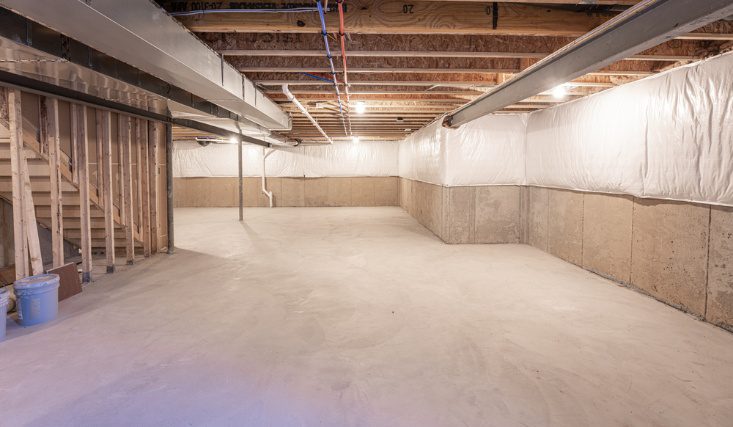

Among the many factors that impact insulation efficiency, none is as important as R-value and the thickness of insulation. Whether you’re replacing insulation in key areas of your home, remodeling, or evaluating a new build, this guide to insulation thickness will help you choose the right insulation thickness and R-value to maximize efficiency.
Does the Thickness of Insulation Matter?
Thick insulation acts as a more comprehensive thermal barrier between indoor and outdoor temperature differences. Also known as insulation depth for spray foam and blown-in insulation, thickness is directly correlated with R-value. R-value measures thermal resistance, with higher values providing superior protection against temperature imbalances.
For example, R38 insulation thickness across all insulation types is twice as thick as R19. Thickness and R-value also translate to heat loss; an attic with R19 insulation would allow twice as much heat to escape during the winter as R38, leading to higher energy bills and increased wear and tear on your heating system.
There are three things to keep in mind when weighing attic, roof, and wall insulation.
- R-value is additive: Adding additional layers of insulation increases thermal protection. Adding two layers of new, professionally installed R19 insulation results in an effective thermal resistance rating of R38.
- Compression is negative: No insulation, regardless of R-value or material, is designed to be compressed or squeezed. Layering too much insulation into a wall or cavity negatively impacts its efficiency.
- Climate is everything: Always follow the recommended insulation thickness and R-value for your region. Follow the EPA’s guidelines or check with your local Koala Insulation for expert recommendations for your area.
Insulation Thickness Charts
Homes lose the majority of their heat in the winter and cold air in the summer through attics (roofs), exterior walls, and air leaks through windows and doors. In addition to sealing air leaks, proper insulation offers significant energy savings, with attics and walls the best opportunities to improve performance.
Attic (Roof) Insulation Thickness
Choosing the insulation for your attic will vary based on the recommended material and the R-value required for your climate. Attics and roofs tend to utilize higher R-value insulation than other areas because heat rises, causing more energy to escape.
Most northern states will have minimum R-values of R49 or higher, with a resultant attic insulation thickness of 16 inches or more.
Roof or Attic Insulation Depth Chart
| Insulation Material | R-value per Inch | R-38 Thickness | R-49 Thickness | R-60 Thickness |
| Blown-in Cellulose | R-3.2 to R-3.8 | ~10 to 12 inches | ~13 to 15.5 inches | ~16 to 19 inches |
| Blown-in Fiberglass | R-2.2 to R-2.9 | ~13 to 17 inches | ~17 to 22.5 inches | ~20.5 to 27 inches |
| Fiberglass Batts | R-2.9 to R-3.8 | ~10 to 13 inches | ~13 to 17 inches | ~16 to 21 inches |
| Closed-Cell Spray Foam | R-6.0 to R-7.0 | ~5.5 to 6.5 inches | ~7 to 8 inches | ~8.5 to 10 inches |
You’ll notice that batt insulation thickness is slightly less than blown-in materials, while closed-cell spray foam offers the most R-value per inch. That’s one reason why spray foam insulation is used in tight cavities and hard-to-reach areas, including crawl spaces and attics.
Exterior Wall Insulation Thickness
Exterior walls usually require less insulation because they aren’t as significant sources of heat loss. Wall construction also influences insulation thickness.
Most residential homes are built with wooden studs, and insulation is installed in the cavities between each stud. Wood conducts thermal energy rather easily, which means you may need to add continuous insulation (CI) over the stud. This prevents thermal bridging, or heat loss through wooden elements between traditional insulation.
On the chart below, you’ll find the recommended wall insulation thickness (in inches) for Climate Zones 1-8, plus a recommended CI layer for Climate Zones 3-8.
| Climate Zone |
Wall R-Value Requirement |
Fiberglass Batt Thickness (in.) | Blown-in Cellulose Thickness (in.) | Spray Foam Thickness (in.) |
| Zone 1-2 |
R-13 |
~3.5 to 4.5 |
~3.5 to 4 |
~2 to 2.5 |
| Zone 3 |
R-20 or R-13 + R-5 CI |
~5.5 to 7 |
~5.5 to 6.5 |
~3 to 3.5 |
| Zone 4 (except Marine) |
R-20 + R-5 CI or R-13 + R-10 CI |
~5.5 + R-5 CI |
~5.5 + R-5 CI |
~3 + R-5 CI |
| Zone 5-8 |
R-20 + R-5 CI or R-13 + R-10 CI or R-0 + R-20 CI |
~5.5 + R-5 CI |
~5.5 + R-5 CI |
~3 + R-5 CI |
A Note on Insulation Width
Fiberglass insulation batts are manufactured into two primary widths, based on the standard wooden stud spacing in walls.
- For 16-inch stud spacing, select 15-inch batts.
- For 24-inch stud spacing, select 23-inch batts.
Roll insulation is also available in 15″, 16″, 23″, and 24″ widths. In some cases, your local insulation contractor may need to trim insulation to achieve the ideal fit.
Get the Right Fit with Koala Insulation
Choosing and installing the right insulation goes beyond a handy chart. As North America’s top insulation contractor, every Koala Insulation combines a unique mix of local expertise and national resources.
Take ownership of your home’s energy environment and enjoy year-round comfort with upgraded insulation; schedule a free estimate with Koala Insulation today!
Find Your Location


Get a quote





